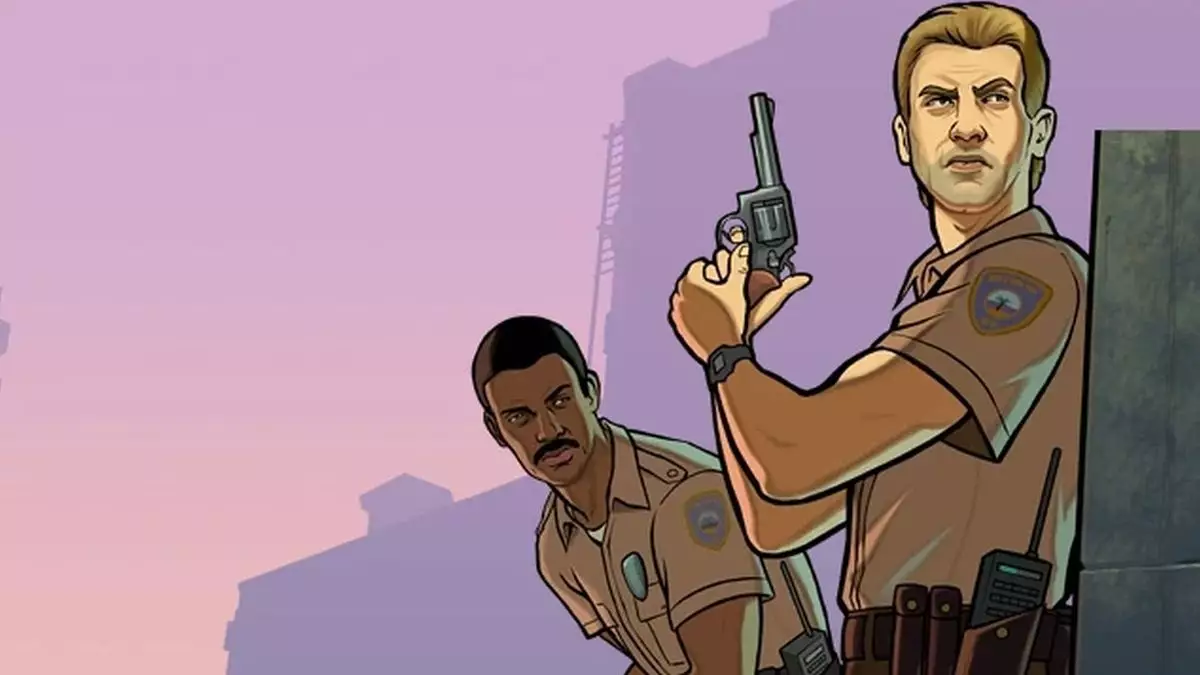Speedrunning, a practice where gamers attempt to complete games as quickly as possible, often leads to some wild and unpredictable moments. One recent incident involving Joshimuz, a prominent speedrunner, has thrown the spotlight on some of the peculiarities of Grand Theft Auto: Vice City and the nuances of game design. In a twist that highlights the complexities of both speedrunning and game development, an unexpected arrest by a rogue police officer brought Joshimuz’s world record attempt to a screeching halt—a situation that has not only entertained viewers but also prompted discussions about game bugs and artificial intelligence (AI) behavior.
In a particularly ambitious run known as the “No Major Glitches” category, Joshimuz found himself nearly 100 minutes into the game. His goal was to complete a series of missions involving the fictional Cherry Popper ice cream factory, a quest that should normally incorporate a fair degree of strategy and skill. However, things took a drastic turn when he inadvertently picked up a one-star wanted level, typically something that a seasoned speedrunner could dodge with ease. But in a comically ironic twist, a police officer—akin to the Flash in his speed—zipped across the scene and nabbed Joshimuz, ultimately derailing his progress.
The frustration evident in Joshimuz’s reaction is relatable for anyone who has encountered unexpected setbacks while gaming. His sharp commentary hints at the absurdity of the situation, dubbing this moment an “old speedrunning legend.” This phrase encapsulates the quirky nature of gaming, where moments of absolute chaos can emerge from the game’s design, revealing vulnerabilities in AI programming that aren’t always apparent until they manifest in real-time.
What followed in the wake of this debacle was a response from one of Vice City’s original developers, Obbe Vermeij. His insights shed light on the underlying mechanics of the game, particularly concerning the AI behavior of NPCs in Vice City. According to Vermeij, the issue stemmed from a bug related to how police officers navigate their environment to engage with vehicles. Instead of taking a logical route towards the car, the cop perceives his options as limited, triggering a “panic code” that causes him to warp directly to the vehicle in question.
Vermeij’s transparency in addressing this specific coding issue demonstrates a fascinating juxtaposition between the artistry of game design and the irony of unexpected bugs. While most would assume that NPC behavior in a game of Vice City’s complexity would be polished and predictable, this incident illustrates how the interaction of various elements—such as open vehicle doors or the presence of other characters—can create feedback loops that result in nonsensical behavior.
The importance of this narrative extends far beyond the humorous encounter between Joshimuz and the errant cop. It plays into a larger conversation about the phenomenon of bugs in gaming and their sometimes legendary status within the gaming community. From the infamous flying glitches in San Andreas to the various oddities players encounter in open-world environments, certain bugs become folktales in their own right. They serve not only as moments of levity but also as reminders of the inherent complexity that comes with designing vast, interactive worlds.
As Vermeij has shared previously, these bugs can evoke a sense of nostalgia and embarrassment, reflecting both the challenges developers face and the playful spirit of gamers who encounter these anomalies. Speedrunning veterans know that they must not only master the game mechanics but also navigate the unpredictable nature of the software itself.
Ultimately, the incident with Joshimuz and the warp-speed cop reveals more than just a moment of frustration; it highlights the ever-evolving relationship between technology, creativity, and the human experience in gaming. In an age where the pursuit of speed and precision is paramount, these quirks remind us of the beautifully chaotic world of video games—where sometimes, it’s not just about the finish line, but the wild journey to get there.


Leave a Reply